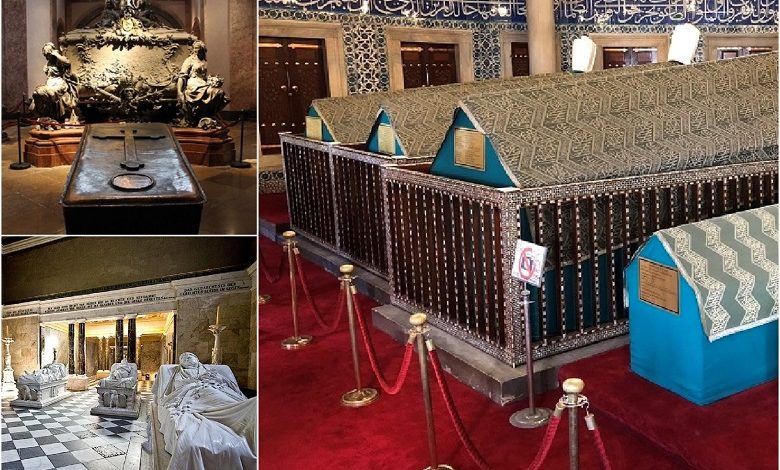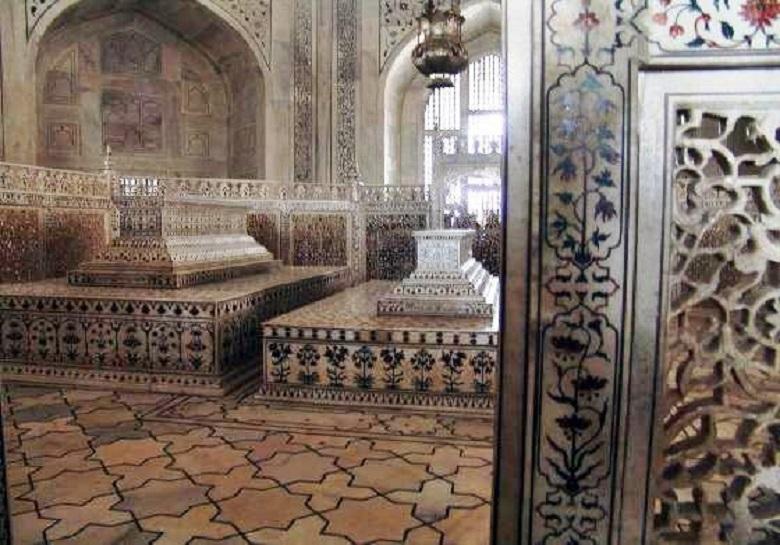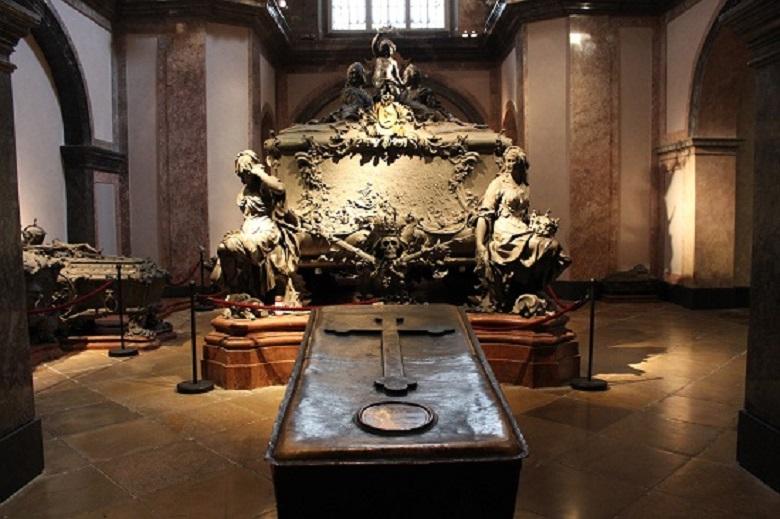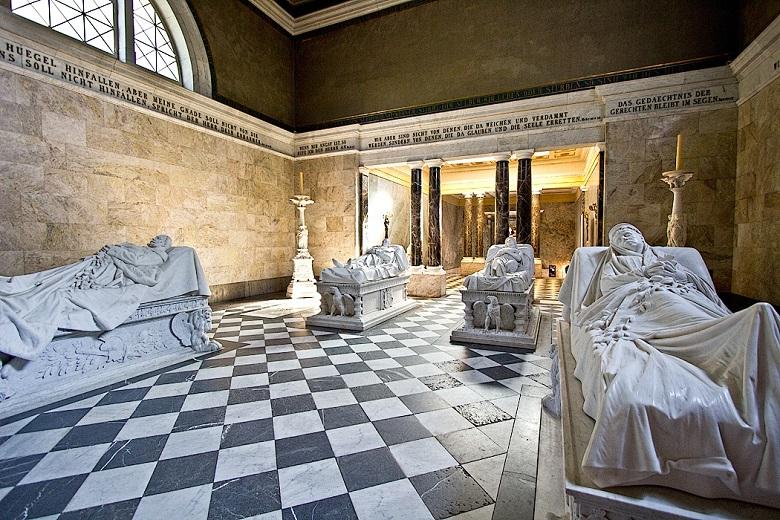The most famous tombs of queens and queens of the past

It is customary to treat the last refuge of the deceased, no matter how the body is after death, with reverence. It is not surprising that the tombs of noblewomen, and even more so of rulers, are different and often become attractions – they are so majestically executed. Here is a list of the most popular tombs of queens and queens of the past.
Taj Mahal

This tomb is the first to be remembered when it comes to the graves of queens. Shah Jahan, an Indian ruler from the Baburid dynasty, loved his wife Mumtaz Mahal so much that he never tired of visiting her chambers, so the queen had to give birth without stopping. The fourteenth birth finished her off.
In memory of his love, Shah Jahan built a real palace where the ashes of Mumtaz Mahal still rest. Shah Jahan himself was buried near her. The castle was built twenty years, a park and a wall with four minarets were erected around it, and inside there are two decorative tombs. It is decorative, not decorated. The actual graves of the Shah and his wife are located underground.
Many tourists come to the Taj Mahal; fortunately, the size of the palace allows real crowds to pass through. Alas, the current ecological situation in Agra may soon make the grave inaccessible to tourists – its walls are gradually turning yellow and collapsing from car exhaust and dirty rainwater. At some point, it will become unsafe to be on the territory of the tomb.
Tomb of Maria Theresa

The famous imperial crypt in Vienna is located under the Capuchin Church. It contains the remains of almost one and a half hundred representatives of the Habsburg dynasty. Accurate, not wholly: according to tradition, before the funeral, hearts were removed from the bodies and buried separately, in other churches, in silver and copper urns.
There are excursions to the crypt under the Church of the Capuchins, so it’s not a problem to see the tombstones of the emperors. Many of them are quaintly decorated. But the most famous tombstone is on the tomb of Maria Theresa and her husband. It is designed in the form of a marital bed. The empress and her husband sit in it, looking at each other, and Maria Theresa reaches for the sword.
Probably, this composition reflected the fact that the empress dearly loved her husband and demanded that he spend the night in her bed, and from some moment, he began to avoid it. Maria Theresa had to use her power to keep her husband close to her at night.
Tomb of Queen Himiko

After one of the first rulers, Queen Himiko, there are so few references left that for a long time, it was preferred to be considered history in general and associated with the myths about the goddess Amaterasu. Himiko is mentioned in Chinese chronicles as the country Yamatai, a shaman who was elected to the throne to end the endless war for him between the male leaders.
According to history, to lose magical power, the queen kept her virginity and did not stop her choice on any man. She surrounded herself with a thousand chosen girls who served her and occupied all the palace positions.
To avoid personal contact with men and not be defiled, the queen passed her will on to the male leaders through her brother, the only man the guards were ordered to admit to the queen. The Chinese wrote that throughout the reign of Himiko, peace and prosperity reigned in the country of Yamatai. After her death, wars and civil strife began again, devastating the region. A year later, the leaders came to their senses and elected a new shaman queen, Himiko’s thirteen-year-old niece named Taiyoo.
At the beginning of the twenty-first century, Japanese archaeologists discovered the ruins of an ancient palace, and in 2009 a grave was found near the ruins. The length of the grave reaches almost three hundred meters, which is very unusual and indicates the special status of the deceased. Radiocarbon analysis showed that the tomb was erected around the time that Himiko lived and died. The discovery immediately transferred the queen from mythical characters to the number of those who probably existed in reality.
For the Japanese, who believe that the country’s rulers are descended from Amaterasu herself (like Himiko and her brother), this makes Himiko’s grave sacred.
When scientists had just confirmed that the tomb could belong to Himiko, the imperial family closed it for study (which, alas, almost always occurs at the expense of the desecration of the grave). It is also impossible to visit the grave freely. But even without many of her photographs, the grave instantly became a cult for the Japanese. Still, after all, Himiko is an essential character in Japanese legends about forming its separate statehood.
Queen Louise’s mausoleum

The tomb of the famous Prussian queen, who led the resistance to Napoleon, was erected right in the garden of the Charlottenburg Palace, and it can be visited just like the Taj Mahal. Louise died at the age of thirty-four from pneumonia. Her dearly loving husband deliberately chose a place for the grave that she liked during her lifetime: the cheerful Louise did not really like cemeteries, but she adored parks and gardens.
Later, the tomb was expanded to bury her husband and four other people there. But from all the sarcophagi, people come to see Louise’s tombstone precisely. The marble queen lies with the face of a man who suffered for a long time and finally fell asleep; her right-hand lies on her chest, as if trying to soothe the pain, her legs are crossed, a tiara is on her head. Louise was considered one of the most beautiful women in Prussia, but people loved her not for this but for the firm will with which she resisted the invaders.
Westminster Abbey

English queens, reigning and not, have been buried for centuries in Westminster Abbey. Queen Anne, the last of the Stuarts on the English throne, Elizabeth I, the last of the Tudors, and many royal wives and daughters found their last refuge there.
All the royal tombs of Westminster Abbey are decorated with sculptural headstones. Some of them attract attention because they are brightly coloured. And yet, the most famous is the tombstone of the Good Queen Bess – Elizabeth I, although it is a one-colour sculptural portrait of the deceased (that is, it does not differ in any way from most other graves). The stream of people wishing to look at the stone lying queens and kings do not dry out in any case.
Mausoleum of Hurrem Sultan

Despite the beautiful love story, Roxelana and Suleiman are buried separately from each other. The Roxelana mausoleum, where two more people are buried, was erected in the largest mosque in Istanbul. Eight years later, a mausoleum for Suleiman was also erected there. He, too, is not alone. Why, in the spacious mausoleums, their graves could not be arranged side by side?
The fact is that Suleiman survived Roxelana, and then he would have to be buried in the grave of his deceased wife – and this was considered a belittling of the Sultan’s dignity. Now, if Roxelana survived him, there would be no problems with burying her near her husband. In any case, her mausoleum inside is an authentic oriental fairy tale, and fans of her history must visit Istanbul and visit the grave of Hurrem Sultan with a camera.
Tombs of Queens Nefertari and Titi

Several necropolises have been found in Egypt. One of them is called the “Valley of the Queens” – many of the wives of the pharaohs are buried there (although not only them). The most colourful of these tombs are Nefertari and Titi.
Photographs and hand-drawn sketches from the painting of the walls of these tombs have long been walking from publication to publication and on the Internet. The tomb of Nefertari, the main wife of Ramses the Great, is also massive for the queen – it has seven halls. A poem-epitaph from Ramses, one of the oldest examples of love poetry, is inscribed near the coffin: “My only love! No one is her rival; she is the most beautiful woman who lived on earth, who stole my heart in an instant!”
Suppose on the frescoes of the grave of Nefertari, images of Osiris and Anubis, the god of the living and the god of the dead, are most often repeated, then in the tomb of Titi.
In that case, there are many portraits of Hathor, the goddess of heaven and beauty. It is believed that the husband of Titi was also Ramses, but the tenth (the Great was the second). For some time, visitors were allowed into the graves of the queens, but from breathing and lighting, the beautiful frescoes began to collapse, so now, not everyone can enter.




